Imagine standing at the very foot of the revered Mount Kailash, not just glancing at its grandeur but feeling the pulse of ancient energy through yourself. While many aspire to complete the Outer Kora, only a select few are drawn toward the ultimate pilgrimage: the Kailash Inner Kora. This is no mere to-do on a bucket list but an arduous yet deeply satisfying personal transformative journey with incredible views of the most sacred faces of the mountain and an experience that will resound deeply beyond your soul after you return home.
The Inner Kora is a journey that takes one through sacred grounds of centuries-old lineage, hidden monasteries, and the wild beauty that only the Himalayas can bestow upon. It is a rarely traveled route, demanding a high level of physical and spiritual capacity, but do take the call; it is an immeasurable reward. This blog is an attempt to shed light on the many facets of the Kailash Inner Kora's experience. Most importantly, it looks at the significance from more than one angle, describes notable places encountered on the journey, states how to reach the trail, and gives some insight into the challenges one has to face, thereby honoring the spirit of all who feel drawn to go on this sublime yatra.
Also Read: Kailash Charan Sparsh
Kailash Inner Kora Facts
Here are some facts about Kailash Inner Kora:
|
Location |
Tibet |
|
Kora Distance |
32 KM |
|
Duration |
3 Days |
|
Difficulty |
Strenuous |
|
Average Altitude |
5000 m |
|
Major Attractions |
|
|
Kora Start Point |
Darchen |
|
Kora Ending Point |
Darchen |
What is Kailash Inner Kora?
The Kailash Inner Kora is a very demanding and spiritually significant pilgrimage that takes devotees much closer than the more common Outer Kora to Mount Kailash. While the Outer Kora makes a complete circle around the sacred mountain, the Inner Kora cuts into its inner section and includes places such as Ashtapad, Nandi Parvat, Saptarishi Cave, and Charan Sparsh. The trek is much harder with all the high altitudes (some places like 13 Golden Chortens and Saptarishi Cave touch 5860m), rugged terrain, and sharp climbs, sometimes even putting them on rocks, crevices, snow, and ice.
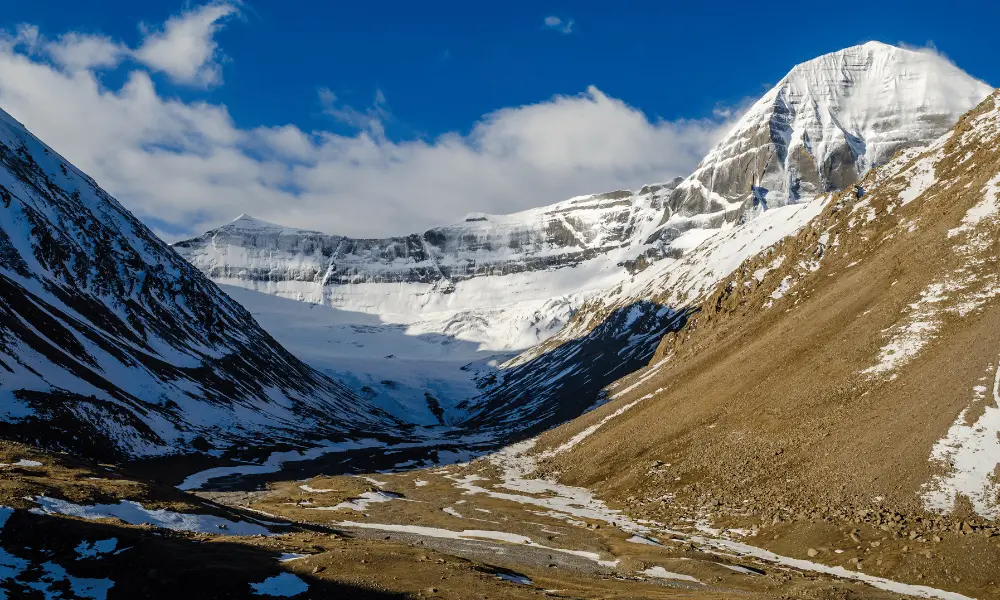
The trip has a short yet challenging trek of one to three days, and it covers anywhere around 32 kilometers. It requires extreme physical strength, with some tour operators recommending that pilgrims should have performed the Outer Kora several times (some sources say 13 times) before attempting the Inner Kora because of its high level of difficulty and the requirement of mountaineering skills. Inner Kora offers a more personal and concentrated kind of spiritual energy, allowing people to feel closer to the divine energy of Mount Kailash and the pathway that holds freedom of spirit at a better return.
Kailash Inner Kora Significance
The Kailash-Mansarovar region enjoys a deep spiritual aura due to the awe-inspiring presence of the Holy Mount Kailash and Lake Mansarovar. This is why the parikrama or kora around these sites is very important. The inner kora assumes even greater spiritual, personal, and cultural reverence.
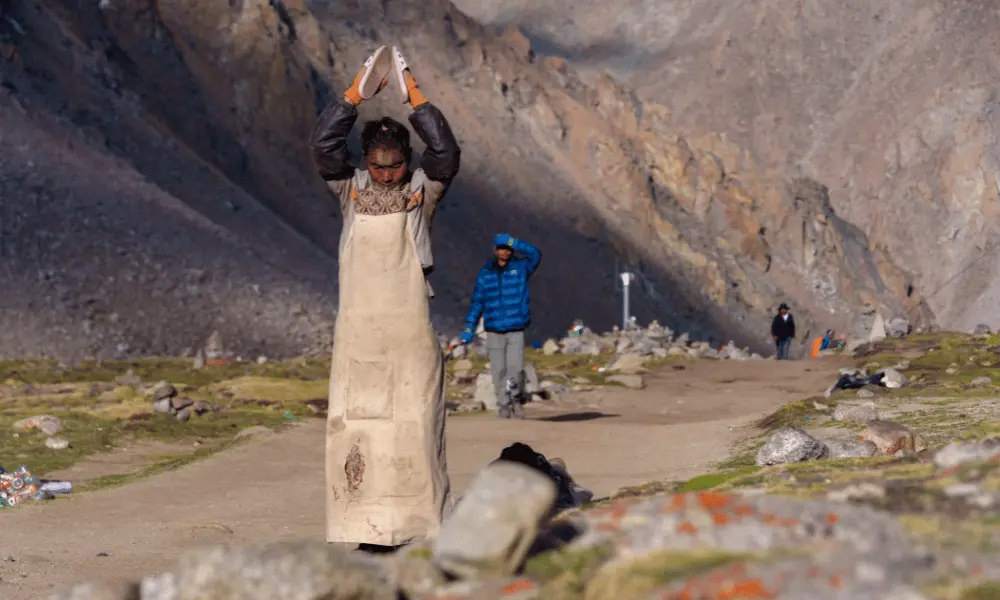
Spiritual Significance
Considered the abode of the divine Lord Shiva, Mount Kailash is a sacred mountain respected by Hindus, Buddhists, Jains, and Bonpo followers. Parikrama is believed to cleanse beings from sins acquired during their life. On the other hand, the inner parikrama allows the pilgrimage to get near enough to perform Charan Sparsh, which means touching the feet of the mountain. When a pilgrim reflects upon the hardships encountered during yatra, they tend to see it as tribulations that must be overcome as their way to liberation.
Personal Significance
Despite being more taxing than the Kailash outer kora, the route is attempted by many due to their desire to show utmost devotion to their deities. Beyond the spiritual merits, the pilgrimage builds toughness and strengthens personal capabilities. Facing the physical and mental setbacks en route, pilgrims have to strive hard to overcome their fears and limitations and pave the way for intense personal transformation.
Cultural Significance
The pilgrimage is not just walking along the path but also making several stops at culturally significant sites. On the way, pilgrims come into contact with people from the local communities, visiting monasteries and observing spiritual practices, to learn about Tibetan culture. Further, given that the yatra attracts participants from different walks of life and different religions, it enriches opportunities for cultural interaction and mutual understanding and thus becomes especially rewarding for those inclined towards other cultures.
Inner Kora Major Attractions
This trek is more than just a journey passing through rugged splendor, pristine landscapes, secluded paths, and several eminent sites; the trail ends up being fulfilling for the pilgrim despite being very demanding.
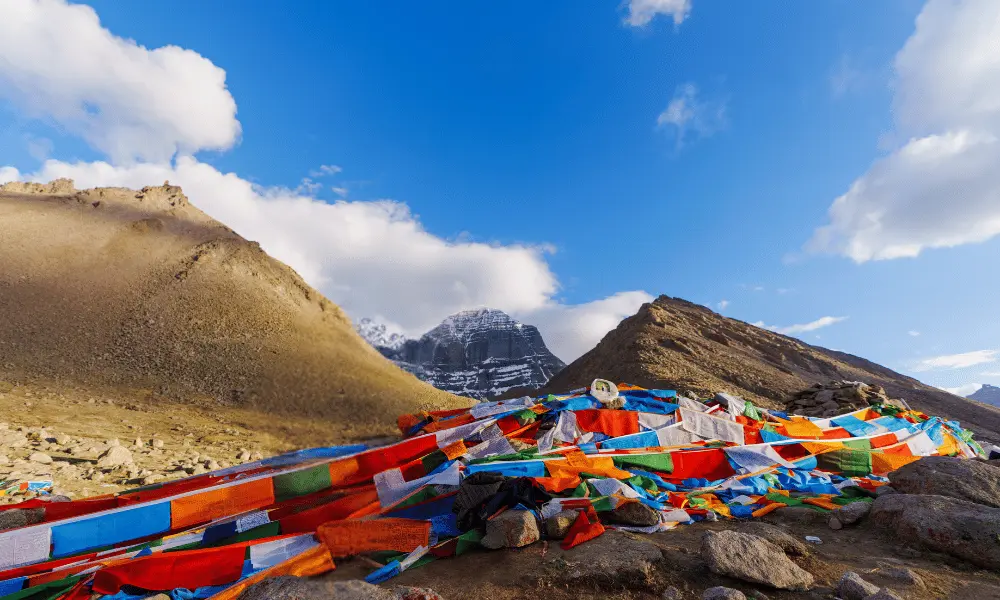
Mount Kailash
Mount Kailash rises 6,638 meters from the Tibetan Plateau, towering in majesty and grandeur. It has greater spiritual value than just natural magnificence. It is highly revered by Hindus, Buddhists, Jains, and the Bonpo; Hindus associate Mount Kailash with Lord Shiva; Buddhists with Demchok; Jains with Rishabhadeva; and Bonpos recognize it as the spiritual seat of Tonpa Shenrab Miwoche. Pilgrims undertake the sacred Kailash Mansarovar Yatra, circumambulating the mountain as a means to be cleansed from their sins and achieve Nirvana.
Learn More: Mount Kailash
Asthapad
Asthapad, standing roughly at 4,900 meters above sea level, is another significant stop en route to Kailash. It stands as a major center for Jain pilgrimage, as it is believed that the first Tirthankara, Rishabhadeva, attained liberation here. The glories of the place hide behind all the stone structures with their aura of deep spirituality, calling all those seeking greater contact with the divine.
Saptarishi Caves
At an altitude of nearly 5,800 meters, this point of the loop is one of the more challenging. Named after the Seven Sages, or Saptarishis, it is said that in ancient times, these were the caves where the Saptarishis meditated. According to accepted tradition, these Saptarishis were devotees of Lord Shiva who achieved enlightenment through their spiritual practices right there.
13 Golden Chortens
Just beyond the Saptarishi Cave area, another spiritual site is glorified with its presence. The 13 chortens stand for the varied aspects of Buddhist teachings, like wisdom and compassion, reminding devotees of the way to enlightenment.
Charan Sparsh
Treating Charan Sparsh as the "touching the feet" ritual, it is considered very sacred during the pilgrimage. Worshippers gently touch the northern base of Mount Kailash to express their veneration to Lord Shiva. This act conveys the highest respect and acknowledgment of Shiva's great intellect and divine power.
Learn More: Kailash Charan Sparsh
Kailash Inner Kora Route
The Kailash Inner Kora is less known and therefore less traveled along its path, which is not marked. For the pilgrims, it carries intense spiritual rewards and weary immersion into the vicinity of Mount Kailash. The trek starts with an overnight stay at Darchen for acclimatization and physical preparation. This provides the pilgrims a chance to visit Asthapad, Saptarishi Cave, and the 13 Golden Chortens. These sites already bring a taste of the sacred atmosphere and will be a harbinger for the journey that lies ahead with far greater depth.
Now, the next segment becomes the core of the Kora, about 12 KM on foot from Yama Dwar until reaching Derapuk. An off-route leads to Charan Sparsh, a 7 km round trip, from near Derapuk. From Derapuk, the endurance begins in earnest; here, the track splits into two: Outer and Inner Kora. The Inner Kora steadily ascends toward the Sanglam La Pass at an elevation of 5,680 m and then descends toward Zuthulpuk, from where pilgrims are driven back to near Darchen for the end of the circuit.
The last stage of the Inner Kora is quite demanding, crossing rugged terrains and high-altitude passes. Because the route passes very close to Mount Kailash, it is believed to contain strong spiritual energy. Throughout the meandering journey, the devotees exhibit complete devotion and unwavering determination and blindly uphold a heartfelt connection with the divine.
Inner Kora Route Table
|
Route |
Distance |
|
Darchen-Asthapad, Saptarishi Cave, 13 Golden Chortens-Darchen |
15 KM (Drive/Trek) |
|
Darchen-Yama Dwar-Derapuk |
12 KM (Drive/Trek) |
|
Derapuk-Charan Sparsh-Derapuk |
7 KM (Trek) |
|
Deraphuk-Sanglam La Pass-Zuthulpuk |
16 KM (Trek/Drive) |
Related Read: How to Reach Kailash Mansarovar?
Kailash Inner Kora Difficulty
The Kailash Inner Kora is said to be one of the most sacred pilgrimages in the world. It offers a deep experience, yet it is also very demanding. Located in Tibet's autonomous region, this pilgrimage allows the devotees a closer view of the divine presence of Mount Kailash but tests one's physical stamina and mental resolve equally. The Inner Kora is a hard undertaking at an average elevation of about 5,000 meters and generally takes three days to complete.
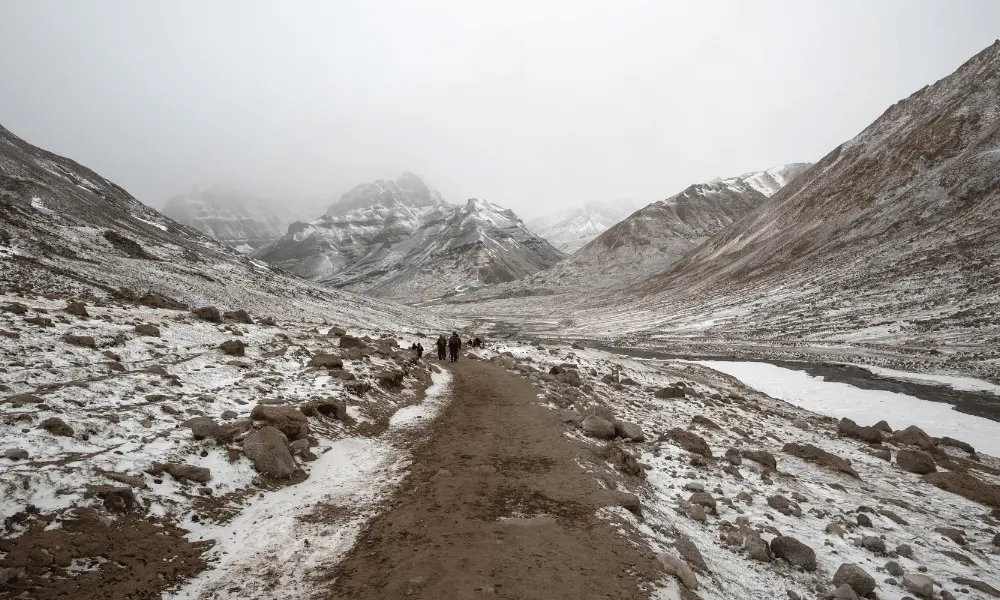
Charan Sparsh forms an integral part of this pilgrimage, which is a 7-km journey from Derapuk. It is required to walk along rarely trodden paths and climb steadily for 4-5 hours, which is quite demanding considering the thin mountain air. The way from Derapuk to Zuthulpuk is very similar, except for crossing Sanglam La Pass at 5,680 meters. Sudden bursts of rainfall or snow showers add to the terrain for which the weather is notoriously unpredictable. Despite the challenges, the Inner Kailash Kora continues to lure the devotees, along with adventurers, thus giving the lifetime experience of another dimension.
Also Read: Kailash Mansarovar Yatra Difficulty
Inner Kora Versus Outer Kora
Kora is a pilgrimage or meditation that involves circumambulating the sacred site or object. Thus, since the sacred site of pilgrimage is Mount Kailash, the circumambulation around it is taken as a ritual to gain spiritual merit. There are two prominent routes for this pilgrimage: the Outer and the Inner.
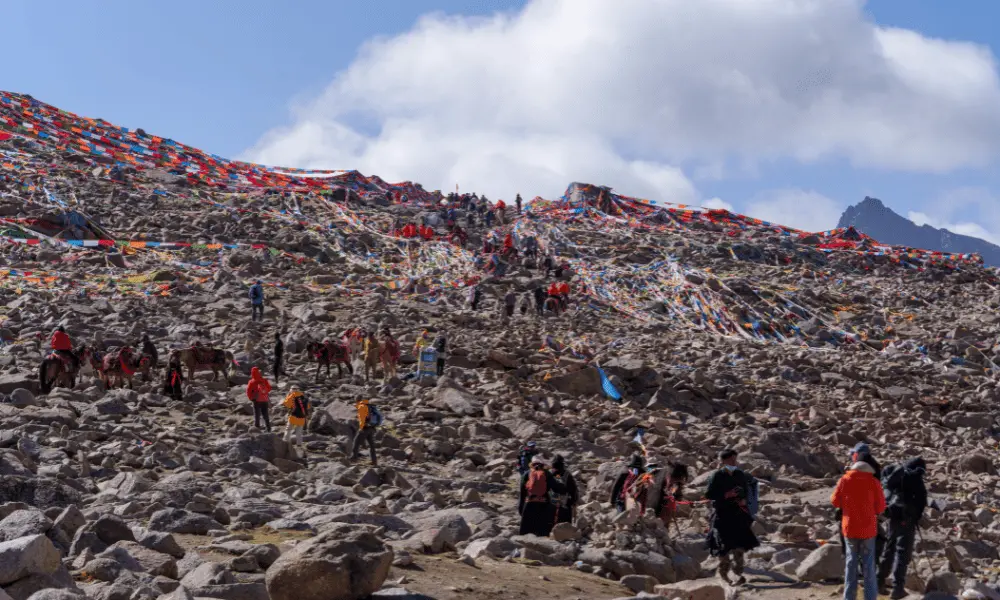
The Outer Kora is, of course, the one most popularly undertaken. Starting in Darchen, it involves a circuit of about 52 kilometers, going past Yamadwar, Derphuk, and Zuthulpuk over the Dolma La Pass, 5600 metres high, and back to Darchen. This is generally considered an easy trek, with the Dolma La Pass being the hardest part due to altitude.
The Inner Kora would be quite a different scene because it is shorter and much harder at around 32 kilometers. Again commencing from Darchen, the circuit leads through Yamadwar, Deraphuk, and Zuthulpuk, but over the Sanglama La or Sin La Pass at 5,680 meters. Pilgrims have to keep hiking upward for 4 to 5 hours at above 5,000 meters of altitude, which makes this a very strenuous trek.
The Inner Kora takes the pilgrims much nearer to Mount Kailash itself and, therefore, offers the deeper spiritual experience and the chance to touch the northern face of the mountain. Because the Outer Kora is easier and less physically taxing than the Inner Kora, more pilgrims tend to do the Outer Kora, and hence it becomes a preferred option over a wider spectrum of seekers.
Listen to our Podcast: Kailash Inner Kora and Outer Kora
Best time to do Kailash Inner Kora
The Inner Kora of Kailash is the most formidable yet rewarding experience for the adventurous and spiritually inclined. The time between May to September is the ideal period for this extremely demanding pilgrimage.
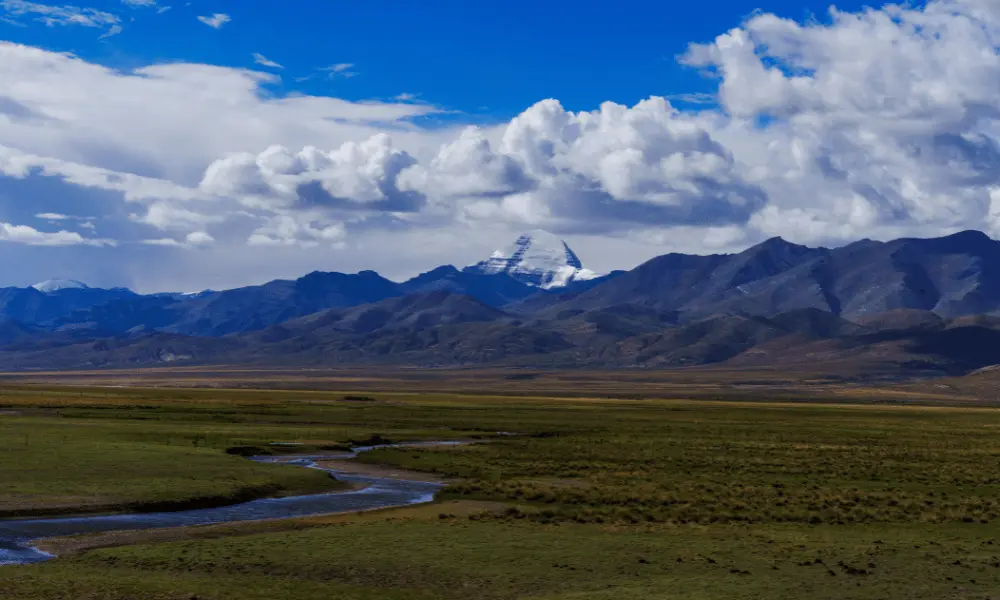
During these months, the weather is fairly stable with clear skies to behold the picturesque view. The days are pleasantly temperate to provide a comfortable trek. The deep snow from the winter season would have by now mostly melted away, leaving relatively accessible trails. However, one can expect light rains and a foggy atmosphere during the months of July and August, as they coincide with the monsoon period of Nepal.
The winter months, from November to April, are totally not recommended due to extreme temperatures, heavy snowfall, and impassable tracks, and most importantly, the region is officially closed for visitors during this period. Whichever time one chooses to participate in the Inner Kora of Kailash, acclimatisation is a must, along with a strong physical body and an experienced guide to ensure that the journey is completed safely.
|
Season |
Temperature |
|
Winter (Late October to Early March) |
Daytime: 0°C to -15°C Nighttime: Can plummet to -20°C or even lower |
|
Spring (March to May) |
Daytime: 5°C to 15°C Nighttime: -10°C or even lower |
|
Summer (June to August) |
Daytime: Around 15 °C Nighttime: Around 0°C |
|
Autumn (September to early October) |
Daytime: 0°C to 10°C Nighttime: Below 0°C |
Must Read: Best Time to do Kailash Mansarovar Yatra
Kailash Inner Kora Package
The Kailash Inner Kora Package offers a guided, fully inclusive trip to Mount Kailash from Kathmandu. It includes permits, transportation, accommodation, meals, and support by experienced staff to ensure your safety and comfort. This very special package includes the entire inner parikrama route: Mansarovar Lake, Ashtapad, Saptarishi Cave, Sin La Pass, Derapuk, Charan Sparsh, and Zuthulpuk, fully equipping you for this extraordinary spiritual journey.
Outline Itinerary:
|
DAY 1: Kathmandu Arrival. |
|
DAY 2: Visa Application, Kathmandu Sightseeing. |
|
DAY 3: Bhaktapur Sightseeing. |
|
DAY 4: Packing and Final Preparation. |
|
DAY 5: Drive to Dhunche, Syabrubesi, or Timure. |
|
DAY 6: Drive to Kyirong. |
|
DAY 7: Drive to Saga. |
|
DAY 8: Drive from Saga to Lake Mansarovar. |
|
DAY 9: Drive to Darchen. |
|
DAY 10: Drive to Ashtapad, Saptarishi Cave, Back to Darchen. |
|
DAY 11: Trek to Derapuk via Yama Dwar. |
|
DAY 12: Trek for Charan Sparsh, Back to Derapuk. |
|
DAY 13: Trek to Zuthulpuk via Sanglam La/Sin La Pass. |
|
DAY 14: Trek from Zuthulpuk, Drive to Saga. |
|
DAY 15: Drive to Kyirong. |
|
DAY 16: Drive back to Kathmandu. |
|
DAY 17: Departure, Farewell! |
Learn More: Kailash Inner Kora Tour
Besides the inner kora, we at KailashYatra.Travel provide various outer kora packages with perks of their own. Each package is curated to provide a unique experience for our guests. Below are some of the top recommended packages:
For Foreigners:
For Indian Citizens:
Inner Kora Travel Tips
Inner Kora around Mount Kailash is a challenging and spirit-enhancing trek. When high altitude and extreme weather are mingled into the rough terrain, one needs to be prepared for his or her safety in health and well-being and respectful participation. The following information provides critical advice and instructions on altitude sickness, packing considerations, and solemn customs that go into defining this sacred place.
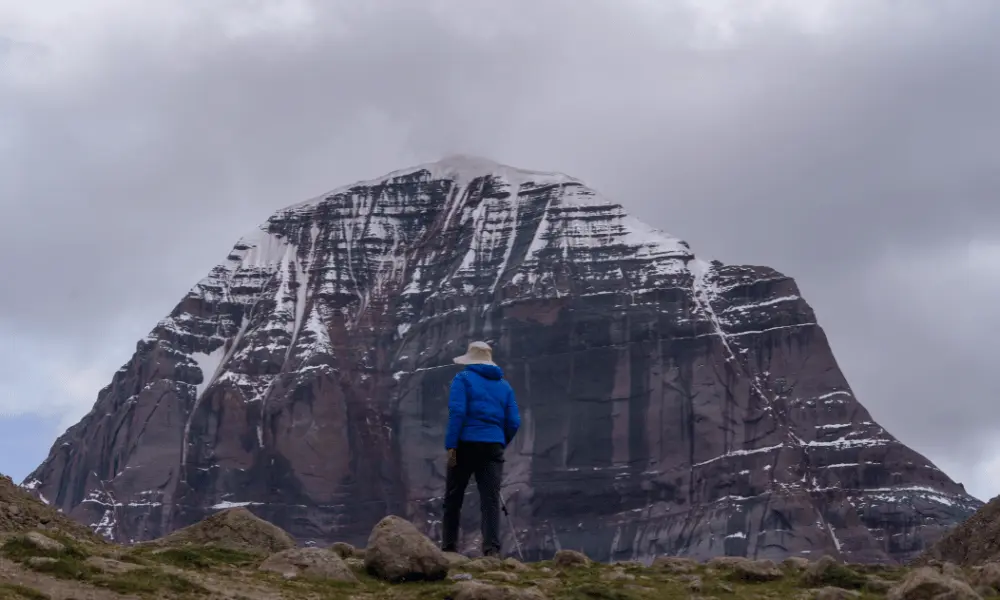
Altitude Sickness
The almost usual occurrence of altitude sickness in such higher-altitude regions remains a risk and can sometimes be life-threatening. The Inner Kora goes as high as Sin La Pass, 5,680 meters; with some trekking time considered above 5,000 meters. So, acclimatizing becomes important. Hydrate properly, ascend slowly, carry correct high-altitude medicine with you, and bring some high-energy snacks. But most importantly, listen to your body carefully.
Packing List
Smart packing is a critical step, from the clothing and equipment to the spiritual items. Pack lightweight and moisture-wicking, sturdy hiking boots, a good high-altitude sleeping bag, trekking poles, a good headlamp, and a portable water purifier. For safety and health: bring altitude sickness medicine (Diamox), a first-aid kit, sunscreen, and energizing food (nuts, protein bars). With the above, you will be able to keep your pilgrimage safe and comfortable.
Learn More: Kailash Yatra Packing List Guide
Respect Sacred Customs and Practices
Mount Kailash is a very great sacred site for various religions. It is very important to respect all their local customs, traditions, and the spiritual essence of the area. Keep in mind the behavior guidelines provided by your guide when visiting monasteries and other holy places. Pilgrims undertake the Inner Kora as a profound spiritual practice; thus, the region should be respected, and efforts should be made to contribute to maintaining the sanctity of the environment.
Conclusion
So what exactly is the Kailash Inner Kora? There's actually nothing like a walk in the park. It is very physically and mentally challenging with these great heights and difficult trails. But from that point on, the experience and payoff for anyone who undertakes it will go a lot further than simply looking at the breathtaking views of Mount Kailash. There arises a feeling of accomplishment, bonding, and connecting deeply with the sacred. The journey becomes etched in the very experiences of the person who has undergone it. So whether you are doing it for spiritual development, a new meaning, or simply to experience one of the world's most intense energies, Inner Kora undoubtedly stays with you, shifting your perspective on yourself and the world forever. Challenge every limit of your own and discover aspects of yourself and of this mystical land you had never thought existed.
Frequently Asked Question (FAQs)
Here are some frequently asked questions related to the Kailash Inner Kora:
What is Kailash Inner Kora?
The Kailash Inner Kora, or pilgrimage, is an act of walking around Mount Kailash, a divine spiritual site in Tibet. It is a shorter but harder route than the outer Kora and brings the pilgrims nearer to the mountain. It is a 32 KM journey that is done by the pilgrims for spiritual benefit.
How difficult is the Kailash Inner Kora?
The Kailash Inner Kora is harder than the Outer Kora due to the rugged terrain and higher altitude. The trek takes you through steep, narrow paths, some of which may require scrambling over rocks. Most of the time the pilgrims are trekking above 5000m, which poses some degree of risk for altitude sickness to some trekkers; thus, having a good acclimatization period is imperative. Plus, the Inner Kora is less developed and remote; these paths are not properly maintained.
How long does Kailash Inner Kora take?
Usually, 3 days are taken for the Kailash Inner Kora and one separate day for visiting other major points of interest around Darchen. This provides ample time for acclimatization due to the high altitude.
What is the difference between Inner Kora and Outer Kora?
Inner and Outer Kora differ from each other on the route, difficulty, and spiritual focus. Inner Kora is more difficult, having 32 KM of trekking and being nearer to Mount Kailash, crossing Sanglam La Pass at a height of 5,680 meters. The sacred rites of Charan Sparsh (touching the mountain's feet) are observed along this route. Because of the few and rugged paths, it is mainly for experienced or deeply spiritual pilgrims. Conversely, Outer Kora is 52 KM long; it follows the outward circumambulation path of the mountain. It is slightly easier in that a greater number of devotees can undertake this pilgrimage, who attach more emphasis on adoration and spiritual merit in circumambulating the sacred peak.

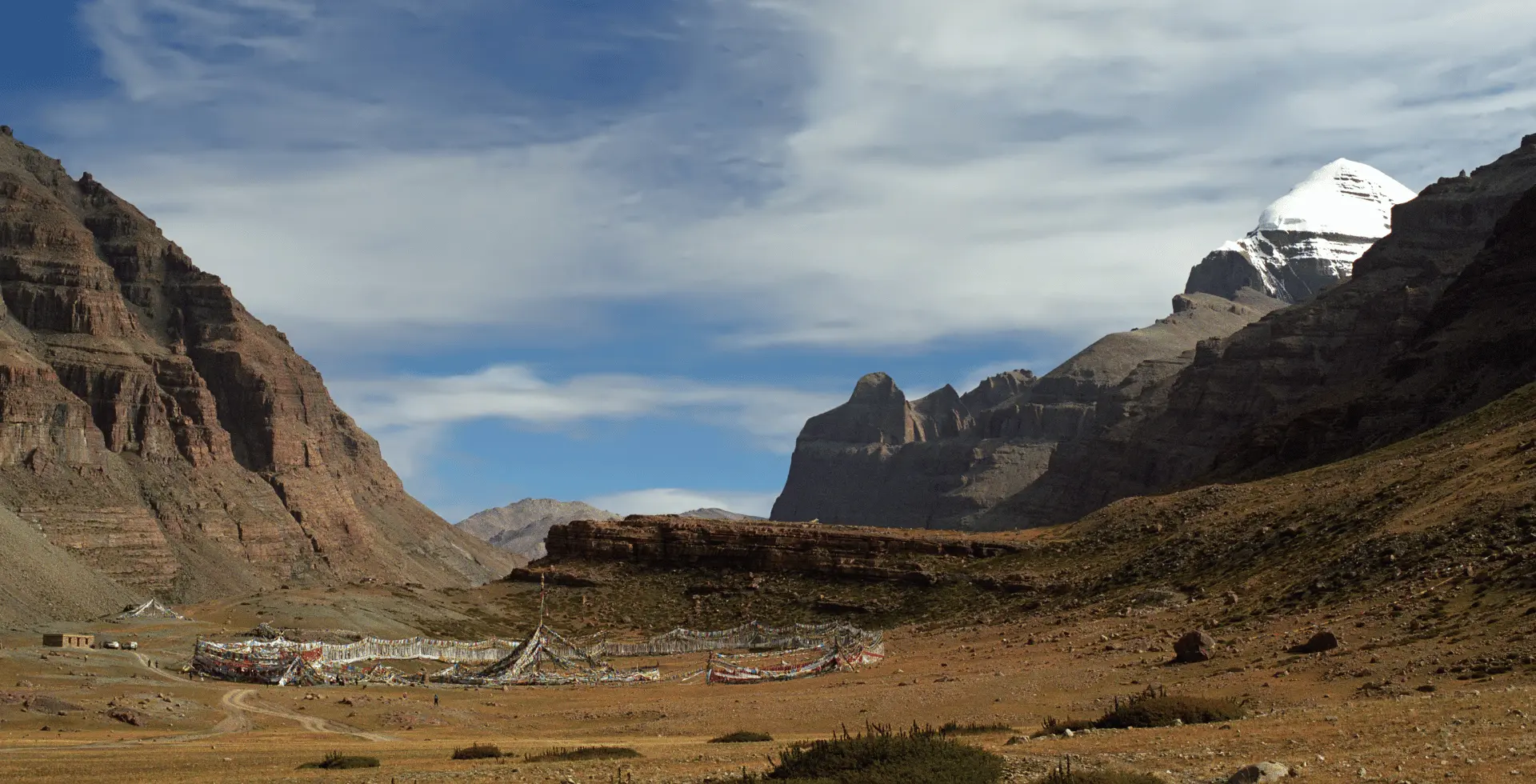
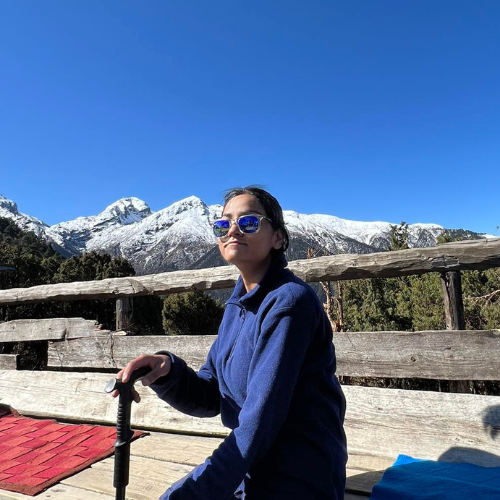 Mandira Itani
Mandira Itani